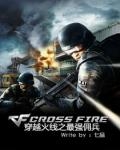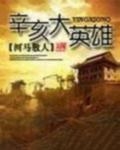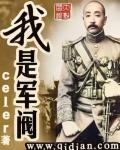Chapter 279
In the deep night, under the starry sky, the summer heat has begun to appear in the streets and alleys of Moscow.
In the study of his residence, Yuri stood in front of the open window with a cigarette in his mouth, looking at the deep night outside the window, while thinking about the content of his report in his mind.
Not far behind him, next to the desk, there was a brand new typewriter on the table. Gerlyosha was sitting in front of the typewriter, waiting for him to continue the previous topic.
Disarmament is not a simple issue. It involves all aspects. If any issue is not considered properly, it will easily trigger a series of chain reactions and even cause very serious consequences.
Especially for the Soviet Red Army, which has just experienced a protracted and extremely difficult war, disarmament at this time becomes even more important.
The composition of the Soviet Red Army was very complex. In the existing army, there were officers and soldiers who actively requested to join the army, officers and soldiers who were forcibly conscripted, some prisoners released from prisons and labor camps, and some people liberated from German prisoner-of-war camps.
In terms of the soldiers' physical health, there are a large number of lightly wounded soldiers whose work is not affected, some seriously wounded soldiers with disabilities, a large number of seriously wounded soldiers who have completely lost their ability to work, and some wounded soldiers with mental problems. The placement of these soldiers after retirement is particularly important and needs to be treated with caution.
As for the family situation of soldiers, some soldiers long to return to their hometowns after the war to reunite with their families; some soldiers have lost all their relatives and want to continue living in the army; and some released prisoners naturally do not want to return to prison or labor camps. These different situations also require different treatments.
Stalin already had the idea of disarmament, and he also proposed to set up a special "Disarmament Working Committee" to specifically preside over this work. However, according to his idea, this committee would be placed under the General Staff and the General Political Department, and would be jointly led by the two departments.
But Yuri did not agree with this idea, because in this case, the power of the "Disarmament Working Committee" would be too small and would not pose any constraints on the local governments at all. The corresponding demobilization and resettlement work would inevitably be difficult to implement.
In Yuri's plan, whether it was to smoothly promote disarmament or to gain more power for himself, this committee should at least be placed under the People's Committee and directly led by the People's Committee. The Soviet People's Committee was later the famous Soviet Council of Ministers, which was similar to the State Council in China and mainly performed administrative functions.
In fact, Yuri's real idea was to place this department under the leadership of the National Defense Committee and have it led by Comrade Stalin himself. However, the National Defense Committee, which brought together all the core leaders of the Soviet Union, including the Minister and Deputy Minister of Defense, the Chief of the General Staff of the Soviet Army, the Director of the General Political Department, the Chairman of the Council of People's Commissars of the USSR, the head of the Military Industrial Committee, the Chairman of the State Security Committee of the USSR, and the Minister of Internal Affairs, was, after all, only a wartime department, and its survival was very uncertain, so Yuri did not hold out much hope.
In order to make Comrade Stalin, or more precisely, the entire Standing Committee of the Presidium of the Central Committee pay attention to this matter, Yuri prepared an extremely detailed report.
Yuri knew very well that in this report, it was useless to simply mention the importance and difficulty of disarmament. Comrade Stalin and his followers would not care about these issues. They were the ones who took charge of the overall situation, and details were not something they needed to consider. Therefore, in addition to mentioning the importance and key points, they must also see the benefits, the advantages, the medium-term gains and the long-term beautiful vision.
Only by listing all these things one by one and placing them in front of them one by one can we make them excited and actively participate in the whole process.
In the past two days, Yuri has reviewed a lot of information from various departments. He combined the disarmament policies adopted by the country at different times in his previous life, added some of his own ideas, and began to organize this report.
Generally, such reports have a fixed format. Since it is about disarmament, the first thing to do is to emphasize the importance and urgency of disarmament.
According to the data Yuri obtained from the Council of People's Commissars, the losses suffered by the Soviet Union during the Great Patriotic War were staggering. In this war, more than 1,700 cities were destroyed, 81,200 industrial and mining enterprises were destroyed, more than 70,000 villages and nearly 100,000 collective farms were looted, and 47% of the arable land and more than half of the roads and railways were paralyzed. The direct economic losses amounted to nearly 700 billion rubles, and the indirect economic losses amounted to 2.5 trillion rubles. One-third of the Soviet Union's national wealth was wasted.
Most importantly, the population losses caused by the war will mean that the Soviet Union will face a labor shortage problem for several years after the war.
At present, the problems directly facing the Soviet Union are: destroyed cities need to be rebuilt; road traffic needs to be rebuilt; industrial and mining enterprises need to be rebuilt; collective farms in various places need to be rebuilt; barren arable land needs to be restored, and so on.
So where would the missing labor force come from? It was not enough to rely solely on the 2.5 million prisoners of war detained in various places. Therefore, the Soviet Union had to cut redundant troops from the existing army of 12 million.
As the Deputy Chief of the General Staff of the Soviet Army, Yuri analyzed that the current standing force that the Soviet Union must retain is between 2.5 million and 3 million, including several garrison clusters in Eastern Europe and border guards. In other words, the troops that need to be laid off will be as high as 9 million. Considering such a large number of troops, if they are laid off all at once, it is likely to bring instability to the country. In addition, the complexity of the troops, so Yuri believes that the disarmament work must be strategic and needs to be implemented in stages and batches.
According to Yuri's idea, the first thing to do for disarmament should include three parts: first, make a detailed registration and division of the existing troops, temporarily retain the troops that have won special honors during the war, heroic troops and guards troops; second, do a good job in the resettlement of disabled soldiers after retirement; third, make statistics on the posts and positions that can be used to resettle disabled soldiers in local areas.
During this phase of work, Yuri proposed that the placement of disabled soldiers must be ensured, and the relevant work can be carried out under the leadership responsibility system of the state, city, town, village and collective farm. If any link has problems, the person in charge of the corresponding link will be held accountable. The specific work can be supervised and implemented by the General Political Department.
The second task of disarmament is also the focus of the entire disarmament work. In this part of the work, Yuri suggested that the dismantling of ordinary troops should not be a one-size-fits-all approach, but the composition of the troops should be screened. For those third-level troops composed of prisoners and prisoners of war, they should be reorganized on the original basis and reorganized into six to ten engineering construction corps. In the next three years, these engineering construction corps will undertake the engineering reconstruction of cities, road traffic, bridges, and industrial and mining enterprises.
As the deputy chief of the Soviet general staff, Yuri knew very well how many troops were made up of prisoners and POWs. These troops had a special title: disciplinary troops. In 1943, their number accounted for about 2.7% of the total Soviet army, but now it is less than 2%. If we add the prisoners liberated from German POW camps during the march to Berlin, the number of prisoners would be nearly 4 million.
There are all kinds of people in these troops, including criminals who have committed robbery and murder, political prisoners who have been imprisoned, and of course, the largest number are deserters.
Yuri's plan was to thoroughly "transform" these people through three years of labor, and then give them freedom after three years, giving them the opportunity to become ordinary Soviet citizens.
As for the ordinary Soviet troops, Yuri suggested that those soldiers who were willing to return to their hometowns should be allowed to undergo professional rehabilitation, while those who were homeless or unwilling to undergo professional rehabilitation could be separated and formed into two large-scale production and construction corps, namely the "Volga River Basin Production and Construction Corps" and the "Pripyat River Basin Production and Construction Corps".
As for the border guards and internal security forces, Yuri suggested that they should also be included in the scope of disarmament. In this part of the proposal, he proposed to continue to expand the establishment of secret cities east of Urla, and believed that with the collection of experts and scholars from Germany, Austria, Hungary, Romania and other countries, it would be necessary for the Soviet Union to carry out scientific research in many aspects in future construction. And these research works must inevitably require huge investment and corresponding confidentiality work to maintain, so from this aspect, the disarmament issue must also be reflected accordingly.
It took Yuri nearly a week to compile this report, during which he revised and improved it several times, before finally coming up with a draft that he was not very satisfied with. Even so, the draft of the report was more than 120 pages long.
If this report was implemented in full, then a seemingly simple disarmament issue would become a huge task requiring the participation of the entire Soviet Council of People's Commissars, the Ministry of Internal Affairs, the State Security Committee, the General Staff, and the General Political Department.
Yuri didn't intend to play a leading role in this work, he just wanted to be one of the executors.






